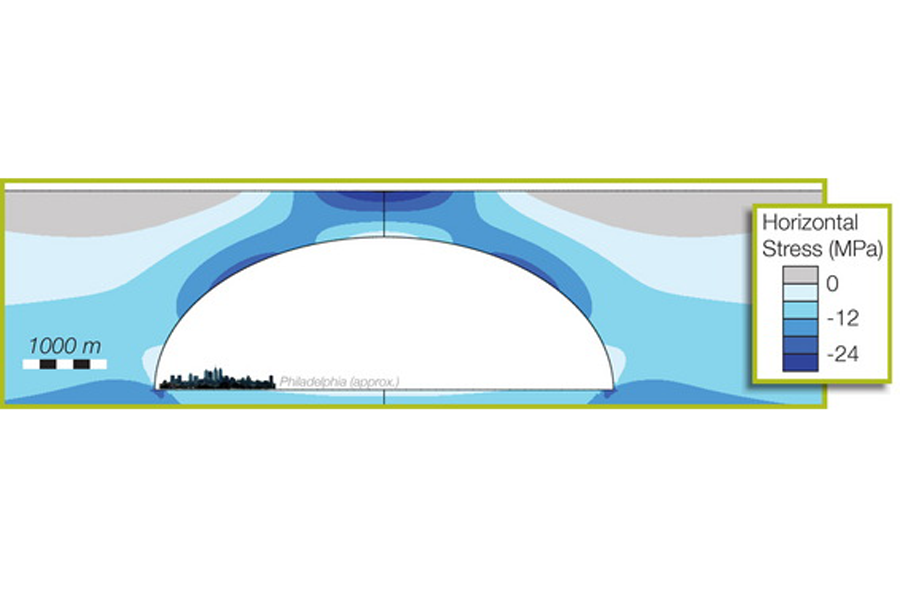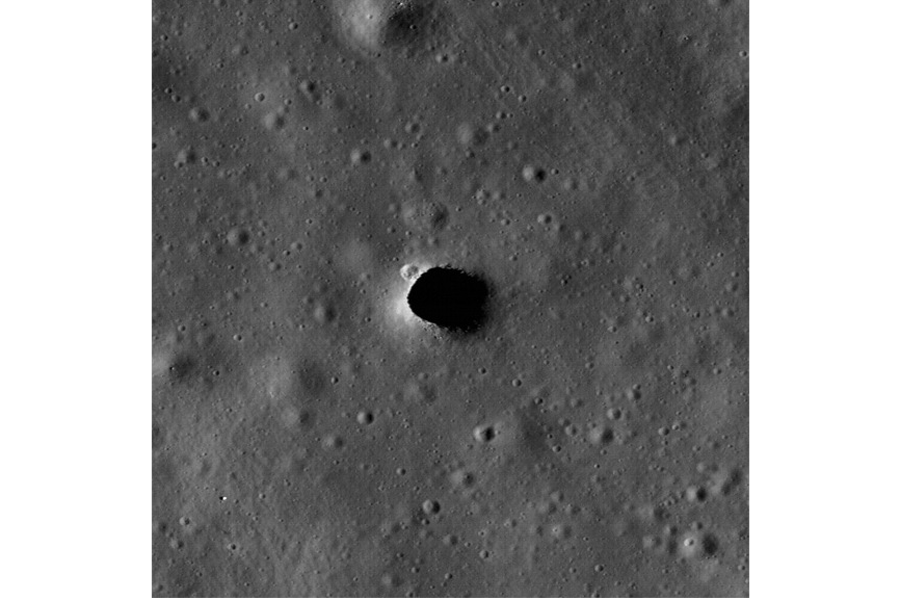Why underground moon cities are slightly less implausible now
Loading...
| THE WOODLANDS, Texas
Earth's moon is rife with huge lava tubes – tunnels formed from the lava flow of volcanic eruptions – and new theoretical work suggests that these features could be large enough to house structurally stable lunar cities for future colonists.
Data from NASA's Gravity Recovery And Interior Laboratory (GRAIL) mission suggests that lava tubes on the moon could have diameters in excess of more than half a mile (1 kilometer). These features could support future long-term human exploration on the moon, offering shelter from cosmic radiation, meteorite impacts and the wild temperature swings of lunar day and night, according to scientists with Purdue University who performed the study.
Purdue University researchers presented their research during the Lunar and Planetary Science Conference held here March 16-20. [Lava Tubes on the Moon: Home for Astronauts? (Video)]
Beneath the Moon
According to Jay Melosh, a Purdue University distinguished professor of Earth, atmospheric and planetary sciences, the edges of the lava cool as it flows to form a pipe-like crust around the flowing river of lava. When the eruption ends and the lava flow stops, the pipe drains leave behind a hollow tunnel.
"There has been some discussion of whether lava tubes might exist on the moon," Melosh said in a Purdue press statement. "Some evidence, like the sinuous rilles observed on the surface, suggest that if lunar lava tubes exist they might be really big."
The presence of sublunarean voids has recently been confirmed via the observation of "skylights" in several lunar maria.
Structurally sound
David Blair, a graduate student in Purdue's Department of Earth, Atmospheric and Planetary Sciences, led the study that examined whether empty lava tubes more than 1 kilometer wide could remain structurally stable on the moon.
The Purdue team found that if lunar lava tubes existed with a strong arched shape like those on Earth, they would be stable at sizes up to 5,000 meters, or several miles wide, on the moon.
"This wouldn't be possible on Earth, but gravity is much lower on the moon and lunar rock doesn't have to withstand the same weathering and erosion,” Blair reported. "In theory, huge lava tubes — big enough to easily house a city — could be structurally sound on the moon."
Stability factors
Blair and his team found that a lava tube's stability depended on the width, roof thickness and the stress state of the cooled lava. They modeled a range of these variables.
The researchers also modeled lava tubes with walls created by lava placed in one thick layer and with lava placed in many thin layers.
Moreover, the study findings about lunar rock and the moon's environment were applied to civil engineering technology used to design tunnels on Earth.
Future work, Blair advised, will provide a more accurate picture of the maximum possible size of lunar lava tubes.
Leonard David has been reporting on the space industry for more than five decades. He is former director of research for the National Commission on Space and is co-author of Buzz Aldrin's 2013 book "Mission to Mars – My Vision for Space Exploration," published by National Geographic, with a new updated paperback version to be released in May. Follow us @Spacedotcom, Facebook and Google+. Published on Space.com.
- Home On the Moon: How to Build a Lunar Colony (Infographic)
- Moon Base Visions: How to Build a Lunar Colony (Photos)
- Moon Master: An Easy Quiz for Lunatics
Copyright 2015 SPACE.com, a Purch company. All rights reserved. This material may not be published, broadcast, rewritten or redistributed.








